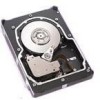Seagate 15K.3 ST373453FC Model Product Manual PDF - Page 44
Cheetah 15K.3 FC Product Manual, Rev. D, FC-AL system errors, Read retry count, Maximum recovery
 |
UPC - 000004165019
View all Seagate 15K.3 manuals
Add to My Manuals
Save this manual to your list of manuals |
Page 44 highlights
34 Cheetah 15K.3 FC Product Manual, Rev. D When the RC bit is one, reallocations are disabled even if the ARRE or AWRE bits are one. The drive will still perform data recovery actions within the limits defined by the Read Retry Count, Write Retry Count, and Recovery Time Limit parameters. However, the drive does not report any unrecovered errors. Table 3: Read and write retry count maximum recovery times Maximum recovery time per Read retry count1 LBA (cumulative, msec) 0 1 2 3 4 5 6 7 8 9 10 11 (default) 51.97 59.97 203.9 219.9 243.9 275.9 347.8 355.8 371.8 407.8 444.4 980.1 Maximum recovery time per Write retry count1 LBA (cumulative, msec) 0 24.0 1 36.0 2 40.0 3 76.0 4 151.9 5 (default) 179.9 [1] Setting these retry counts to a value below the default setting could result in degradation of the unrecovered error rate. For example, suppose the read/write recovery page has the RC bit = 0, the read retry count set to 4, and the recovery time limit set to 450. A 4-block read command can take up to 244 msec recovery time for each block and a maximum of 450 msec recovery for all four blocks. If either of these limits is reached and a block has not yet been recovered, the command will end with Check Condition status and an unrecoverable read error will be reported. 7.3 FC-AL system errors Information on the reporting of operational errors or faults across the interface is given in the Fibre Channel Interface Manual. The FCP Response returns information to the host about numerous kinds of errors or faults. The Receive Diagnostic Results reports the results of diagnostic operations performed by the drive. Status returned by the drive to the initiator is described in the Fibre Channel Interface Manual. Status reporting plays a role in systems error management and its use in that respect is described in sections where the various commands are discussed.















